At Testable we are working to create infrastructure for the future of psychology research. For us, this means creating a scientific environment that is open, scalable, accessible and flexible. From the start, Testable has been designed to lay the groundwork for next-gen research tools. Our browser-based, high-performance experiment builder offers powerful features and flexibility delivered through an interface that is easy to learn and use. It is connected to a dedicated academic participant pool (Testable Minds) to create a real community of students, researchers and participants working on new psychological discoveries together.
In the past academic year, we have been working hard to expand on this mission by adding a wide range of highly requested features to cover even more flexible research paradigms, as well as expanding the usability and accessibility of our platform.
Here is a full overview of all highlight developments we have launched in the past academic year, in case you missed any:
The gamechangers…
10x your testing by seeing all changes and effects unfold in realtime, without leaving the editor.
No matter how quickly you can build in Testable, you will still need to test your experiment before launch. Instead of testing the entire experiment as a participant, you can jump into any trial of the experiment. Simply pull up the built-in previewer that you’ll find underneath the editor. Once you click into the previewer window, you can also interact with it. You can give responses, test logic routing and move from trial to trial just like a participant (with small exceptions). Get your experiment ready 10x faster by seeing and testing your changes instantly without ever leaving the editor.
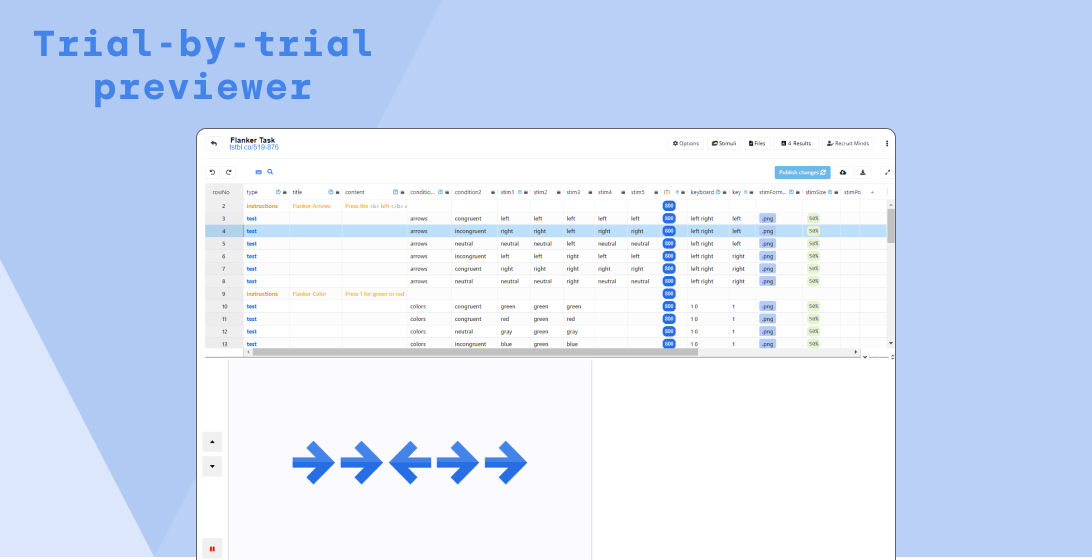
Much more flexibility with much less trial file
Wildcards are a powerful feature that allow you to create complex experiment setups and at the same time reduce clutter and redundancies in your trial file . It also allows you to design experiments not possible before. You can upload a list with all your stimuli and other information that should vary from trial to trial alongside your trial file. You can access this list in the trial file by using a “wildcard” as a stimulus. Using dedicated list options, you can decide what should happen with the stimuli in the list. Should they all be presented in order, or randomly? Do you want to sample a certain number of them and perhaps repeat them? Are there any constraints to randomisation you want to enforce or do you need to group trials together? The wildcard feature allows you to do all of this and more in an efficient and intuitive way.
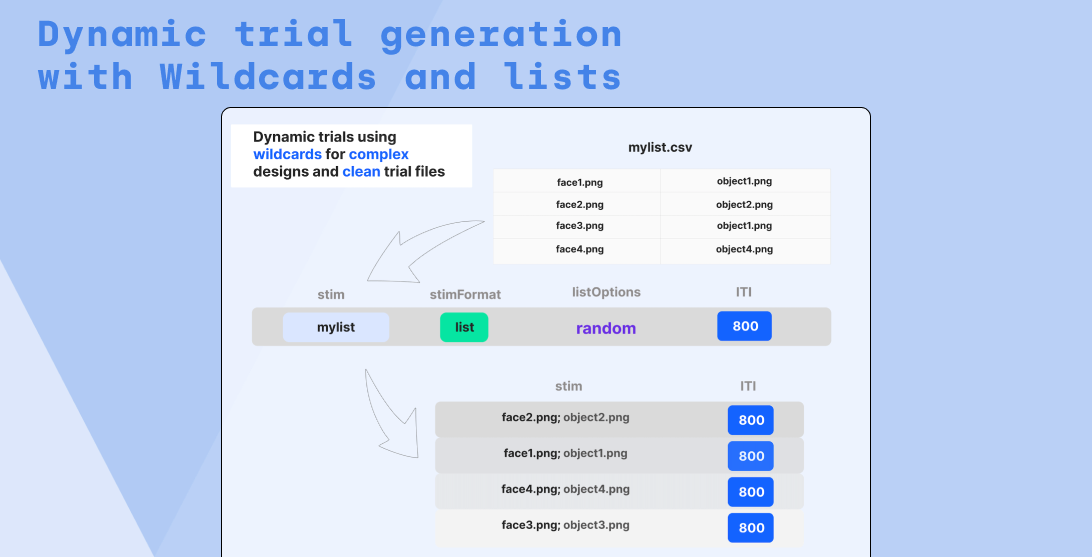
Put your participants on the clock
Timers were around on Testable for a while but you could only use them in single trials. Now you can create entire timed sections consisting of multiple trials or survey questions. Timers can run forwards or backwards, vary in size and color and be positioned flexibly on screen. Timers can now impact the flow of your experiment. When they expire, you can choose to send participants to another section of the experiment.
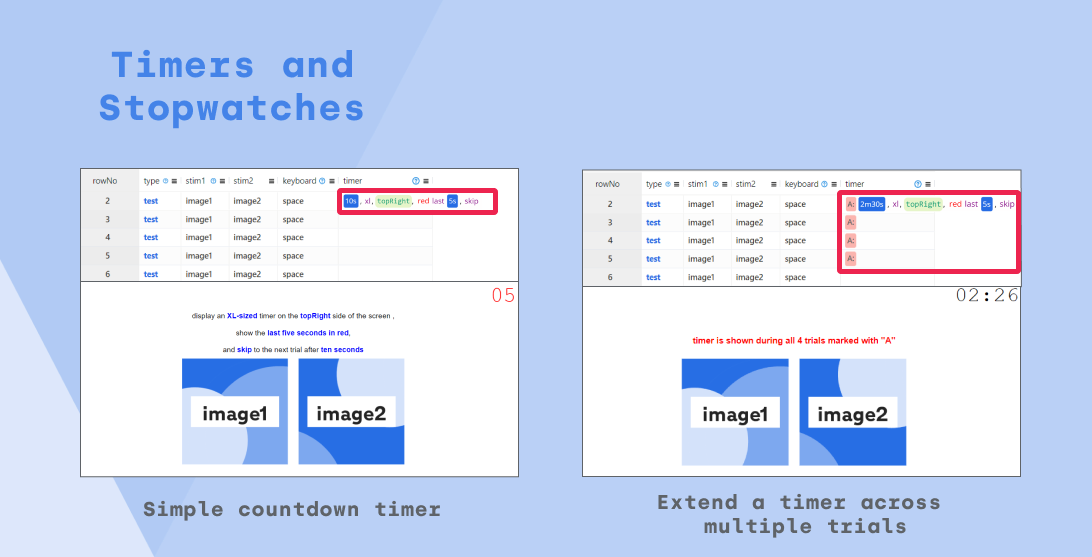
Then some nice tweaks to existing features…
Study the effect of Deep House on performance in the Stroop task, anyone?
Want to playback a sound during your entire experiment? Or do you simply want to capture a range of response whilst audio is playing? You can now easily extend the duration of any audio playback across any number of trials.

In case they don’t click…
You can now automatically redirect participants to a URL location after the debrief screen has been shown. You can use this feature to send participants to the completion pages of external participant pools. Or you can automatically send participants to a follow-up task which is not built in Testable. As participants are redirected only after they see the debrief screen, you can be sure that their data is saved.

Stimuli files too small or too big? We got you.
Small quality of life feature: Using a new column (stimSize), you can control the display size of your stimuli from within the trial file without having to resize the actual files. (We still recommend not using overly large image files to not impact the participant experience through long loading times).
And some nice additional tools to make your experiments more rounded with less effort

More options in the default demographic form.
In the project options you can opt to display a range of standard demographic questionnaire items to your participants. You can now choose whether these questions (if displayed) are mandatory or can be skipped. Additionally, we have created separate sections for Sex and Gender and clarified the wording in each question to clearly distinguish the two.

How useful is this feature on a scale from 1-7?
Likert scales (technically: horizontal radio buttons) now join the roster of response options in Testable survey trials. Simply use “likert” as a responseType in any “form” trial to create a question with a likert scale.
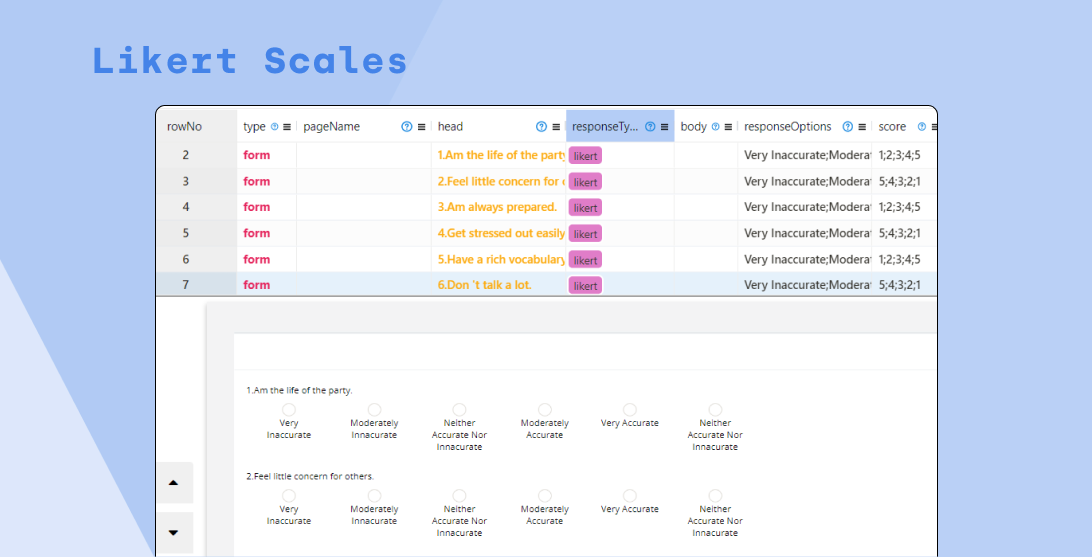
Consent is king.
Before starting, participants need to understand the experiment and agree to a set of consent statements. In Testable you can now build a custom information sheet and separately a flexible set of mandatory consent items. Additionally, you can also present a separate debrief screen to participants who rejected consent. A proof of consent document for all your participants is now also available as a separate download in the “Results” section of any project.
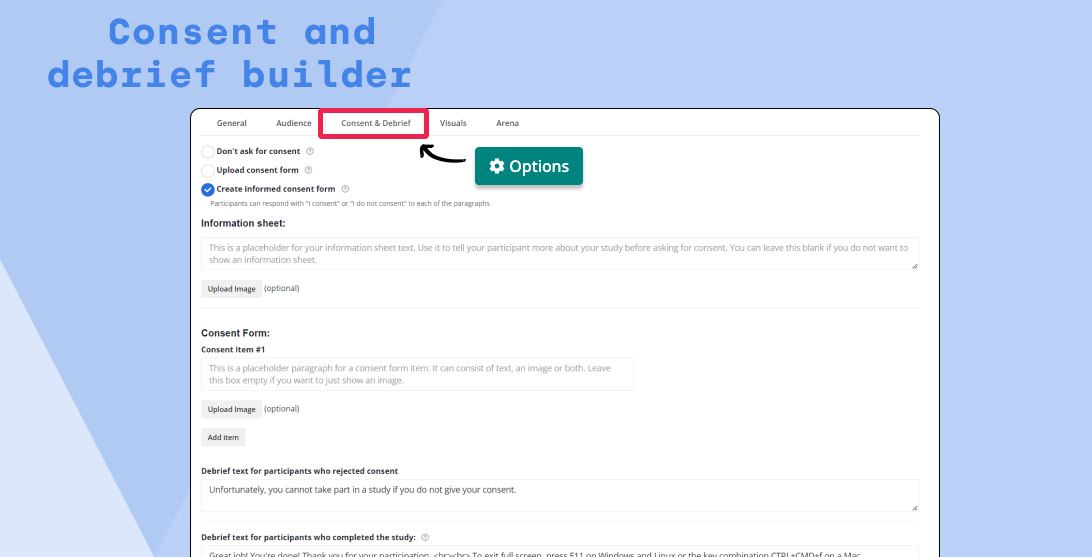
For that “uh oh” moment.
Every time you commit a change to your experiment’s trial file a new version of your experiment is created. This happens when you upload a new file or when you publish your changes in the editor. You can browse and restore all previous versions of your trial file in the “files” section of your experiment. This way you don’t have to worry about trying things out or even breaking your experiment. An earlier version is always there for you.

Less jumping from tab to tab. More information and resources at your finger tips.
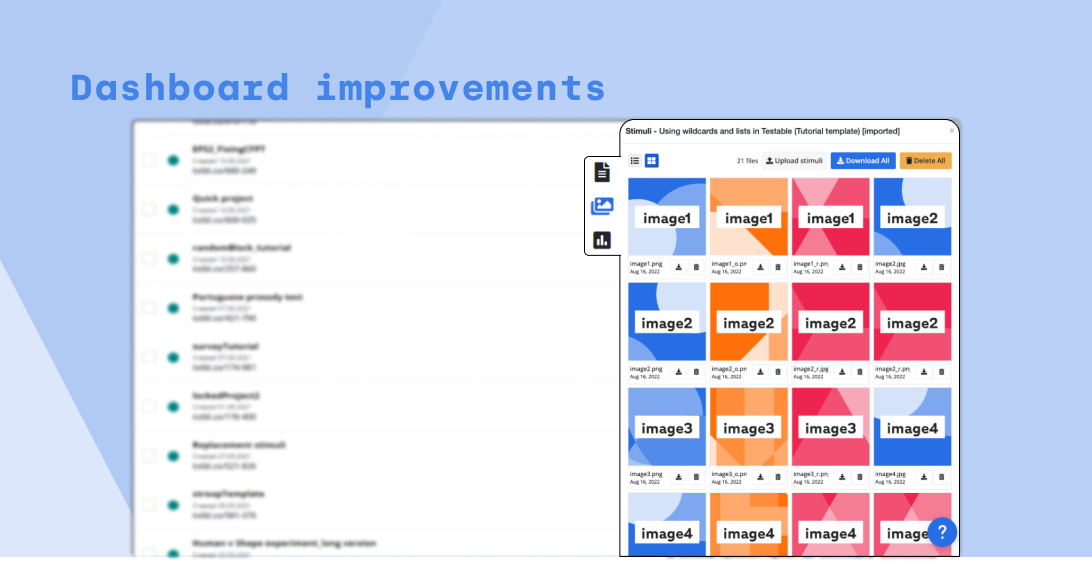
Not to say that people are lazy. But isn’t it it nice if most of the work is already done for you?
We always believed that you should never have to start with a blank page when creating new projects. It’s a massive time waster having to build from scratch something that has been done before many times. Instead, you should focus what makes your experiment unique. That’s why an extensive library of classic psychology experiments templates have joined our iconic natural language form as an easy way to get started with a new experiment. You can directly import fully developed experiments like the Stroop, Flanker, Attentional Blink or Posner Cueing task with a simple click. Each part of the templates is fully customisable, so you can make it yours with no restrictions.
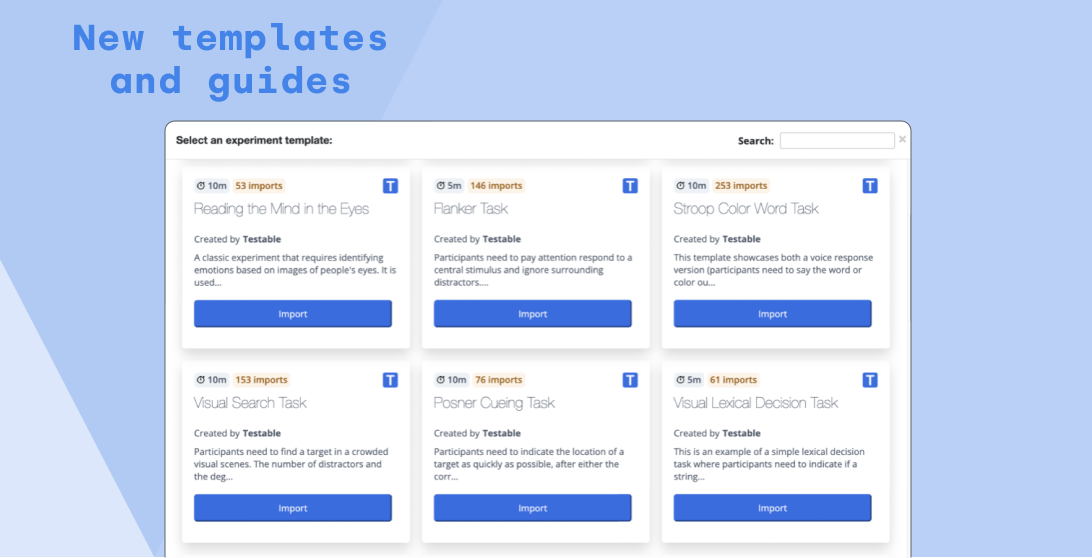
Mingle outside your department. Also pass around ownership.
Earlier in 2021 we have launched our collaboration feature, allowing multiple users to work together on the same project. Previously, this was restricted to users from the same academic department. Now we made it possible to collaborate with any Testable user, as long as they have a group membership (Lab or Department). We also now support the full transfer of ownership of a project between users.

Launch when you want. Run when you want. Account for time zones.
Until now, each study you post on Testable Minds went live as soon as we completed our review. It would also simply run 24h/day until all participations were recorded or the study expired.
Now we give you much more control. You can pick a precise date and time for your study to go live and for when it should expire. In addition, you can define a specific time of day for your study to be available to participants. This allows you to control for time of day in your studies. Finally, you can set all timings to account for the participants’ local time zone. That means you can launch the same study in New York and in London and make sure that it will go live in the morning, whenever “morning” is for your participants. For more details, check out this guide.
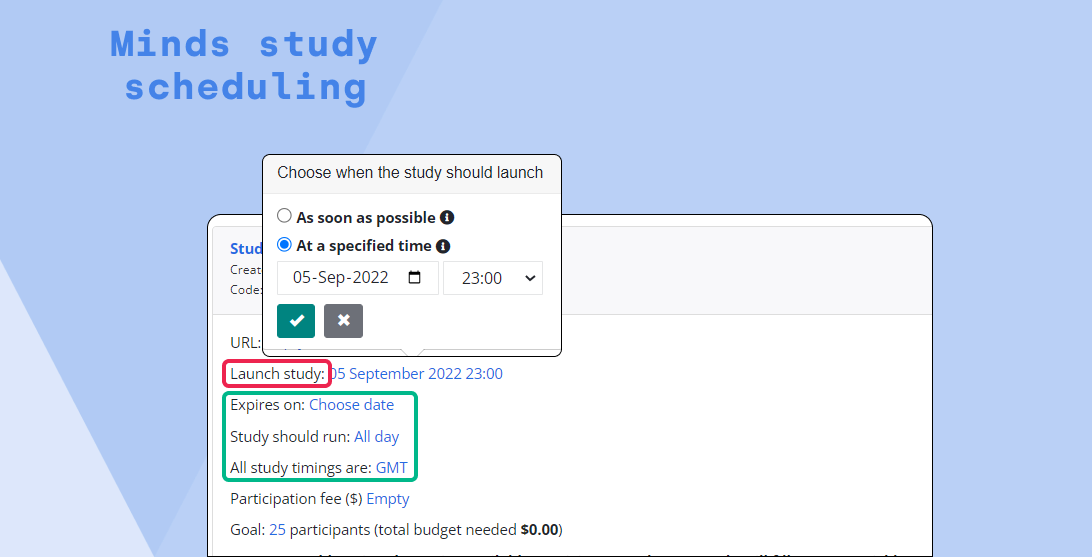
Equality on demand
This one is easy: Tick a box, receive precisely 50% male and female respondents for your study on Testable Minds.
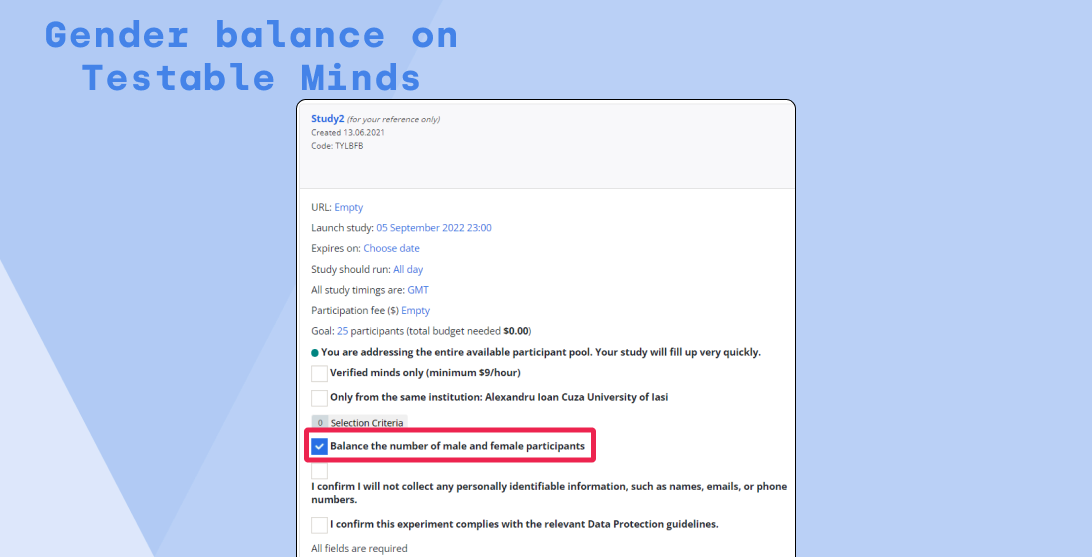
Exclusively looking for daily flat-white drinkers? Use a screener, it’s free.
If you need to disqualify participants from your experiments you can now build “screener” questions in your Testable projects. By using a dedicated “screenout” destination in the “then” logic column you can send participants to a dedicated debrief screen that will terminate their participation. The screener event also seamlessly integrates with Testable Minds. You can use screener questions for up to the first 5 trials of the experiment to narrow down the target population you are looking for and no additional costs.
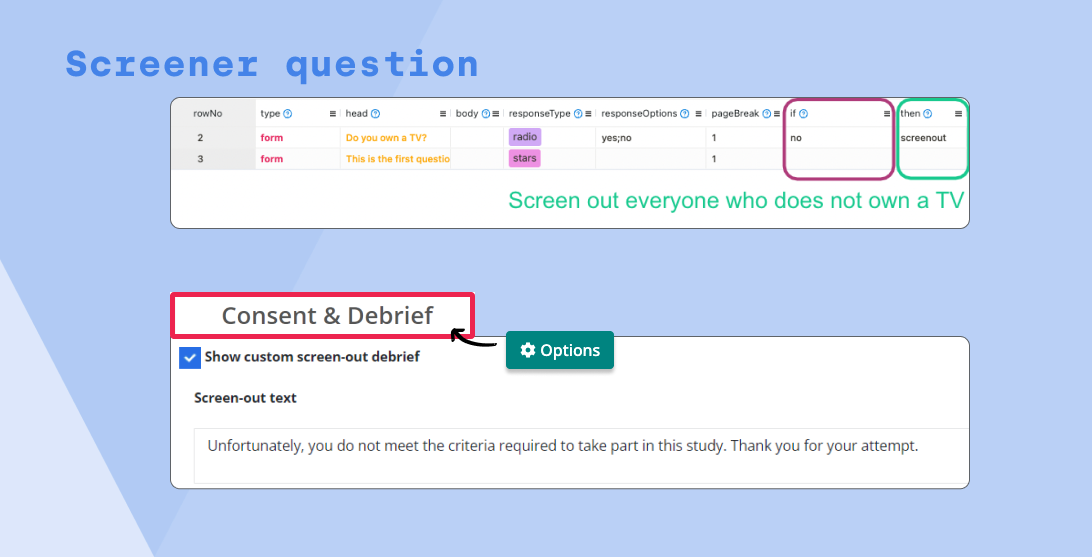
More transparency. More control.
Academic departments is where most of the collaboration between researchers and students happen on Testable. As a license admin, you now have access to an upgraded admin panel. This will allow you more and better ways of organising a departmental workspace. For example, you can now easily allocate resources such as license access, credits or participant budget directly through Testable, instead of processing individual invoices.
One more thing…
We officially launched our new brand identity. Our new brand is not just a cosmetic upgrade. Although it certainly will (as we start rolling it out across all areas of Testable) make your entire experience more exciting and beautiful. But importantly, it is our promise to laser-focus on our core values of bringing simplicity, flexibility and collaboration to science through our tools and spaces. We hope that you will enjoy the new brand as much as we do and are looking forward to another exciting academic year full of new discoveries, advancements and fascinating new insights as we continue to explore the human mind together.
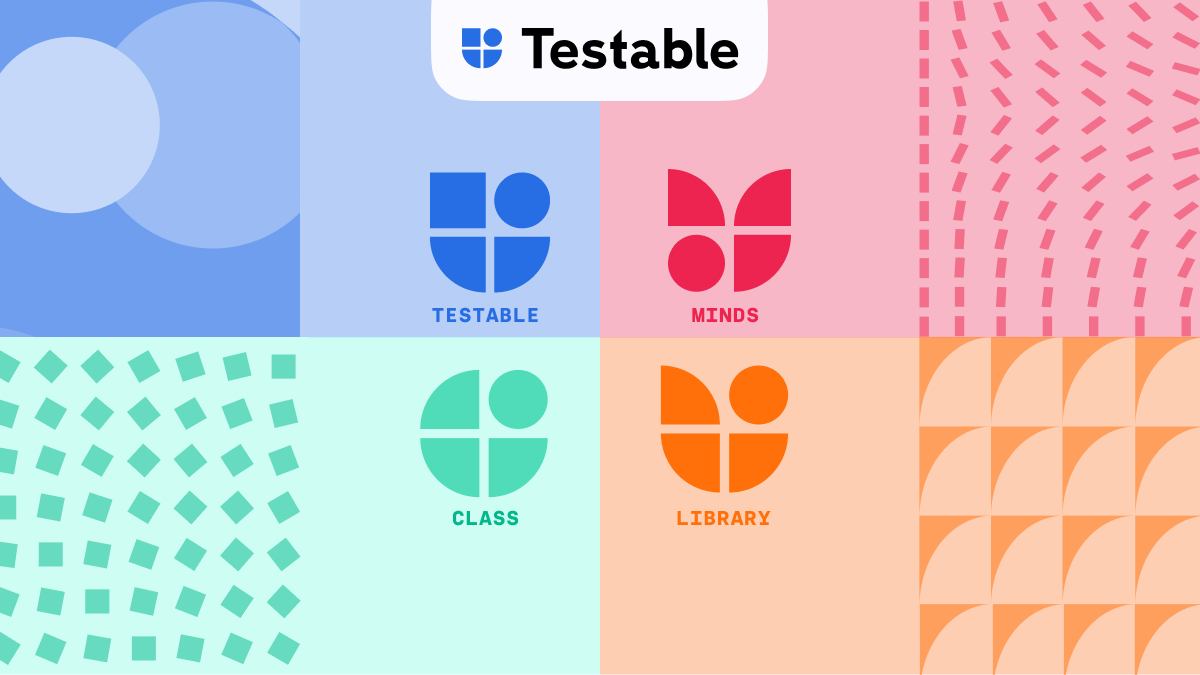
Of course these are just the highlights, accompanied by countless small improvements and tweaks to make your research easier, more effective and more fun.
We have big plans for the upcoming academic season and are looking forward to continue growing a thriving community of next-generation psychology researchers. If you have a great idea for how to make Testable better, then please feel free to contact us at ideas@testable.org. We’re looking forward to your messages!
Head of Product & Growth